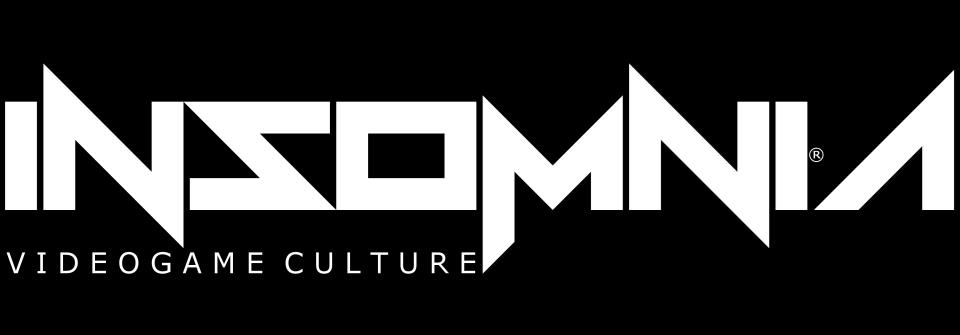James Trew wrote:PlayStation's push for indie games is epitomized by 'The Tomorrow Children'
"It's important to me to be able to express what I want to express." These words come from Dylan Cuthbert, "Game Designer/Programmer/Anything" at Q Games, as he explains how his team came up with the back story for The Tomorrow Children. The forthcoming title is -- by Cuthbert's own admission -- a little bit "out there;" a mix of Minecraft-esque collaborative building, social economics and a Soviet Union-themed post-apocalyptic dystopia. It's definitely a little on the fringe. Multiplayer shooters and herculean protagonists have their place, but, as Cutbert alludes to in his gambit above, it's probably not here. Indie doesn't mean small though, and The Tomorrow Children, I learn, is an example of how companies like Q Games can keep to their own script (or lack of), and still benefit from the considerable support afforded by a partnership with Sony.
The Tomorrow Children ANNOUNCE TRAILER | #PlayStationGC
https://www.youtube.com/watch?v=9bnfz3XjUxQ
Earlier, during a preview session for The Tomorrow Children, the game is described as a "Marxism simulator." The backstory? An experiment to unite all human consciousness went terribly wrong, destroying society. Over the following decades the few survivors try to rebuild humanity. Your role is to venture out into "the void" (the empty space left by the experiment,) and build a new world. Oh, there are also giant creatures to contend with that you kill and mine for materials. Y'know, all that usual stuff.
The off-beat storyline is accompanied by equally expressive artwork. Cuthbert tells me it's inspired by sources as diverse as (among other things) old Czech puppetry, and the 1960s British drama The Prisoner. The result is cinematic, in a vintage French art house kind of way. Cuthbert is keen to point out that a lot of these decisions weren't planned up front (as would be required by a AAA studio,) and that one of the main privileges of being independent is being able to, basically, do what you want.
But there's a paradox. The Tomorrow Children is an indie title in spirit, but Sony is financially involved with the project. So, how does this reconcile with Q Games' approach to game making? According to Cuthbert, it's not only not a problem, it's for the greater benefit of (his company's) indie games.
"I think it doesn't matter what size the game is [financially], as long as it's an expression of the creator... and it hasn't been meddled with... We just really enjoyed creating the technology [for the game], and obviously to create that technology we needed a bigger project to kinda buoy it up."
"From the start, Sony was positive, said start experimenting and they were hands off. They just let us do anything we wanted basically." And the result speaks for itself. How many other blockbuster titles have you opening Matryoshka dolls to collect DNA to rebuild your population? "In this game we've explored more 'different' ideas than we ever have before" says Cuthbert. Suggesting that despite dealing with suits doesn't have to mean compromises. So, perhaps money and indie spirit aren't so mutually exclusive after all?
The Tomorrow Children will be available in the coming months on PlayStation 4.
News
[PS4] The Tomorrow Children
Moderator: JC Denton
[PS4] The Tomorrow Children
![]() by icycalm » 27 Aug 2014 00:37
by icycalm » 27 Aug 2014 00:37
http://www.engadget.com/2014/08/14/play ... -children/
![]() by earthboundtrev » 27 Oct 2014 23:24
by earthboundtrev » 27 Oct 2014 23:24
http://www.allgamesbeta.com/2014/10/the ... eplay.html
Play footage: http://www.youtube.com/watch?feature=pl ... thu8kN97H4
Creating the beautiful, ground-breaking visuals of The Tomorrow Children on PS4
Hi everyone, today I’m going to talk a little about the tech behind The Tomorrow Children. Hopefully you’ve all seen the trailer and are wondering how the glory we managed to get that crazy surreal look we have.
When the project started we had a meeting with Mark Cerny and he said “I want Q-Games to do something that’s a little…outside the box”. So I took that to heart and decided to use the PS4′s awesome compute power to drive three things: Cinematography, Lighting, and Geometry.
Cinematography
So I immediately drove the technology towards “cinematography” which I think is a much more visually stunning style compared to CG that strives to be realistic. Realistic graphics give us directly what we can see, but cinematography also gives us what we imagine we’re seeing. So for example if you are looking at a green field on a cloudy day, the raw photons hitting our eyes are actually a bit of a dull green but the brain’s imagination (and this is different for every person) spruces up the image we are seeing, making it more stimulating and exciting.
Pretty much every movie you have ever seen has gone through this kind of ‘colour grading’ process, the most recent ‘fad’ of which is a process called ‘orange-teal’ which boosts orange in the highlights and blue in the shadows plus a number of other tweaks. Recent TV series such as Breaking Bad, Utopia and True Detective rely on this heavily to set up atmosphere and scene tone.
So I thought to myself, why not do this for games too – but not via a few simple ‘tone mapping’ parameters, let’s go the whole hog and create a professional cinematic colour grading process. And we have two major advantages over cameras and their sensors. The first is that a modern 3D pipeline generates a larger dynamic range of colour which gives us more freedom, and the second is that we have ‘Z’ information for every pixel which lets us introduce Z as a parameter into the colour grading process. This lets us do things such bring up black levels in the distance, or even swizzle colours around a little based on distance from the camera.
Lighting
Okay, with that cinematic feel to everything, we started investigating how to get a ‘pre-rendered’ look to our 3D in realtime and we decided we were going to have to go all out and do something that no-one is doing. So we researched and invented something called ‘cascaded voxel cone ray tracing’. The concept is a little complex but it involves calculating and storing light and its direction around the player as she moves in ever increasing cascades of data.
Because we have volumetric data (the voxel cone part) it means we can bounce light around fairly cheaply and any one pixel on the screen has up to three bounces of light hitting it, and from all directions too. Now, by the third bounce, the light is quite diminished in power but it makes that subtle difference that tricks the eye into thinking it is looking at something with true presence.
Interestingly most Pixar-style CG movies that you have seen are only using one bounce and although they beat us in detail because they can spend 30 minutes or more rendering one frame, our lighting is a lot more subtle and effective. For example, we can move a big red object around in real time and watch the sunlight reflecting off of it bounce onto the surrounding objects, and then watch that light bounce again onto other nearby objects that wouldn’t normally be lit (indirect lighting).
Geometry
Finally, we needed some other new tech to build the game around so we started looking into techniques to do deformable landscapes. We wanted something you could dig and mine, or create shapes in but we didn’t want anything too strongly grid based; we wanted it to feel more real. So we went with something called Layered Depth Cubes, which is a way to represent the world without using polygons. Instead, it’s represented as volumes, which are then converted to polygons as needed (for example if the player goes near them and they need to be actually drawn on screen).
The benefit of not using polygons means the data is far easier manipulate and we can do boolean options (addition/subtraction) on the data to cut out holes or to add details and the whole structure remains solid and intact.
The added advantage of course is this all ties in with the lighting above to give it quick, easy-to-access data structures to bounce its light through!
These are just three areas of technology we’ve created for The Tomorrow Children and without the amazing power under the hood in the PS4 none of them would be possible. The future of 3D graphics is here and it is beautiful!
Dylan Cuthbert - President and Executive Producer, Q-Games
Play footage: http://www.youtube.com/watch?feature=pl ... thu8kN97H4
-

earthboundtrev - Joined: 11 Nov 2013 02:30
- Location: Virginia, USA
2 posts
• Page 1 of 1
Powered by videogames and alcohol.
Who is online
Users browsing this forum: No members and 77 guests
